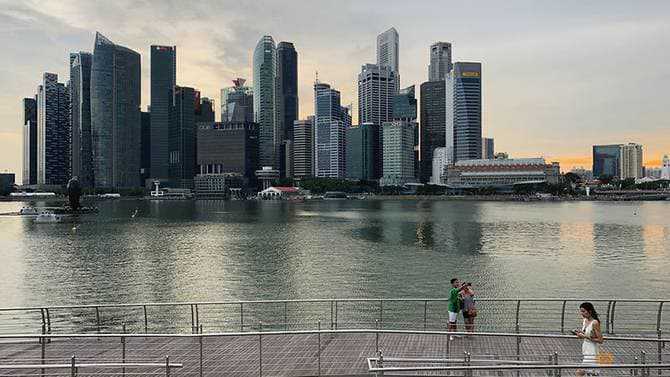Singapore continues to attract investments despite global economic headwinds
20 August, 2019

Despite trade tensions and other global uncertainties slowing down the economy to levels last seen a decade ago, investments into the country seem to have held steady so far.
Singapore attracted almost S$8.1 billion in fixed asset investment (FAI) commitments during the first six months of 2019, according to figures from the Economic Development Board (EDB) released as part of the second-quarter economic report last week.
In fact, the overall investment figure already falls within the EDB’s full-year forecast of S$8 billion to S$10 billion.
By comparison, the country saw FAI commitments of S$5.3 billion during the same period last year.
SECTOR, GEOGRAPHICAL BREAKDOWNS
For the first six months of 2019, manufacturing has been the top source of investment commitments, raking in S$4.6 billion.
Within manufacturing, the electronics cluster accounted for nearly two-thirds of the FAI secured. The remaining clusters – chemicals, precision engineering, general manufacturing industries, biomedical manufacturing and transport engineering – pulled in about S$1.8 billion.
Meanwhile, services attracted S$3.5 billion in FAI commitments for the first half.
Geographically, the US, Europe, and Singapore remained the top three sources of FAI commitments.
They accounted for 43.2 per cent, 34.6 per cent and 13.6 per cent respectively.
During the EDB’s annual review in February, chairman Beh Swan Gin had said the country’s investment pipeline is expected to “remain resilient” this year despite significant uncertainties.
“The good news is that on the investment front, Singapore continues to be very attractive,” Dr Beh told CNA’s Money Mind last week when asked if the agency’s forecast will need to be revised given the challenging economic environment.
He said there tends to be “a certain lag” when companies make decisions, particularly on big investments, but he expects these to “flow through” in 2019.
“We will continue to see these investments come to fruition, so we expect fully to be able to meet the forecast that we shared at the start of 2019,” added Dr Beh.
Economists said the strong FAI numbers for 2019 thus far indicate how the country remains an attractive place for global multinational corporations (MNCs).
This includes reasons such as Singapore having a stable political and business-friendly environment, well-developed infrastructure and connectivity, as well as a skilled workforce.
These factors have grown in importance for businesses amid bubbling trade tensions and other risks that threaten to derail an already-fragile global economy.
DBS senior economist Irvin Seah said: “Singapore has always been attractive to MNCs but the trade war, which has resulted in companies re-shuffling their regional supply chains in response, has intensified the interest into the region and Singapore.”
CIMB Bank economist Song Seng Wun echoed that: “Because of the uncertainties, Singapore as a ‘neutral zone’ continues to be attractive for businesses, especially for big-ticket items."
“Companies are looking at the long run and obviously you think about where you want to position yourself when the cycle turns,” he added.
This can be seen from the steady FAI commitments into the electronics cluster here, despite the current downturn, both economists said.
The country’s push into areas such as big data, the Internet economy and electronic payments has also translated into new investments into the services cluster.
“This is a commitment into Singapore’s Smart Nation initiative and this is encouraging,” said Mr Song.
But as business investments tend to be “very lumpy”, both economists noted that FAI figures can be volatile.
“Bear in mind that the investments that Singapore draws these days tend to be very capital-intensive and mainly focused on high-tech activities. Hence, the quantum is typically very big,” said Mr Seah.
“As a result, you get this kind of lumpy phenomenon – it’s nothing surprising.”
Moving forward, the confluence of downside risks may prompt businesses to hold back on investing.
Still, given the outperformance in the first half, Mr Song reckons total investment commitments for 2019 could still exceed the upper-end of EDB’s forecast.
“Businesses may want to take a bit more time to think about whether they want to commit with the increased uncertainties, so there could be a slowdown in the second half,” he told CNA.
“But for the full year, despite the economy registering its slowest growth in a decade, I think investments should still be able to come in just above the forecast."
The economy came to a near standstill in the second quarter, prompting the Government to cut growth forecasts twice in a row. Singapore’s full-year growth is now expected to come in between 0 and 1 per cent.
Despite that, Singapore continues to attract major investments, Prime Minister Lee Hsien Loong said in his annual National Day Rally speech.
He cited the example of Finnish oil company Neste, which last month announced a S$2.15 billion investment plan for the expansion of its renewable energy plant here.
Neste CEO Peter Vanacker had chosen Singapore because of reasons like good geography and business environment, as well as its workforce, said Mr Lee.
Singapore can take heart from Neste’s commendation as it reflects the country’s excellent reputation among investors, the prime minister added.
TAG(s):
